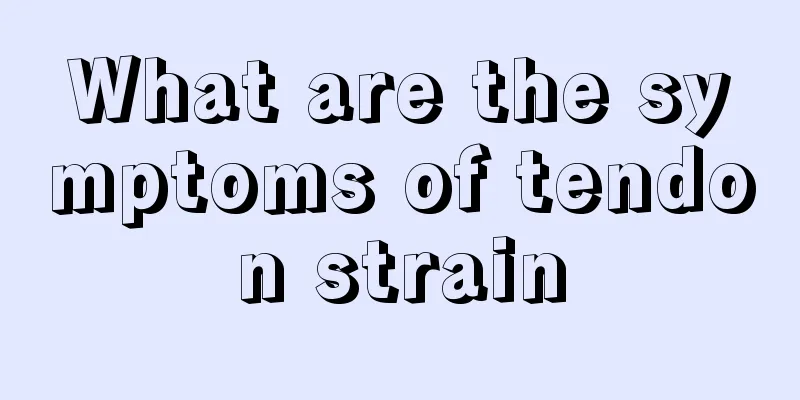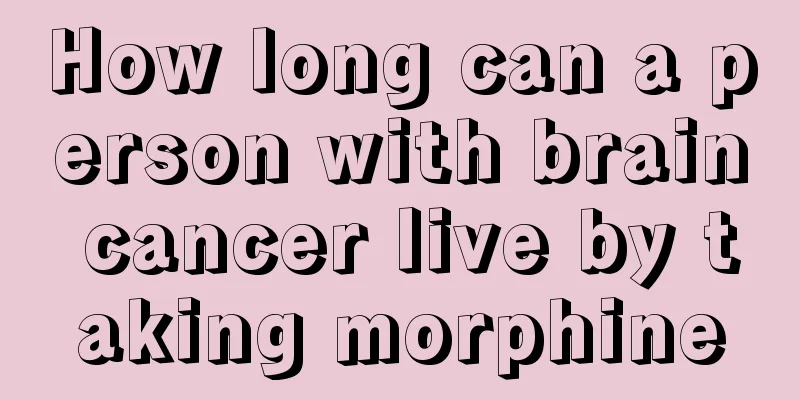What are the symptoms of tendon strain

|
Tendon strain is a symptom, usually manifested by local pain, swelling or tenderness, and sometimes subcutaneous congestion. Therefore, patients are advised to stay in bed and stop activities. Massage therapy or some blood-activating drugs can be used to help improve and relieve the symptoms. 1. Common musculoskeletal system injuries. Complete or partial rupture of a muscle or muscle belly transition caused by direct violence is called muscle rupture. Sudden and violent muscle contraction caused by external force can cause complete or partial tearing of the tendon's origin and insertion points, which is called tendon rupture. If the tendon is subjected to repeated minor trauma for a long period of time, or the tendon itself is subject to chronic wear and tear, the tendon fibers will degenerate and become thinner. A minor sprain in the future may cause the tendon to rupture. This is called spontaneous tendon rupture. Chronic muscle strain is muscle imbalance caused by excessive muscle fatigue, improper treatment of acute muscle sprain, or poor posture and deformity. 2. The general symptoms of muscle and tendon injuries are local pain, swelling, tenderness, and occasional subcutaneous bleeding. If a muscle or tendon is ruptured, the function of that area will be weakened or lost. The treatment of muscle and tendon injuries should be determined based on the severity of the injury and the function of the muscle and tendon to the limb. If it is a simple sprain, the patient should generally rest in bed, receive massage and physical therapy, take analgesics and muscle relaxants and blood circulation drugs orally when necessary, and do functional exercises, etc., and he or she will gradually recover. 3. For partial muscle or tendon rupture, non-surgical treatment is mainly used in principle. Use plaster or splints to fix the affected limb in a relaxed position of the injured muscle, take painkillers and reduce swelling, and then perform physical therapy and exercise after 3 weeks. If the muscle or tendon is completely ruptured, early surgical repair and suture are required, and plaster external fixation is used for 4 to 6 weeks, followed by massage, physical therapy, and active and passive exercises of joint function. |
<<: What to do with muscle strain and ligament strain
>>: What are the symptoms of yang deficiency
Recommend
What is the effect of Le acacia rapeseed honey
There are various types of honey, and acacia rape...
Can coffee and yogurt be drunk together
It is best not to drink coffee and yogurt togethe...
Several general trace element checks
The lack of trace elements can cause many disease...
How often is it best to have your ears cleaned?
When it comes to cleaning ears, many people often...
What to do if your skin itches and dandruffs
Symptoms such as itchy skin and dandruff may be c...
What are the early symptoms of peripheral lung cancer? Several early symptoms of peripheral lung cancer
Peripheral lung cancer is a common type of lung c...
The difference between hibiscus and mume
The difference between hibiscus and mume, in life...
How great is the harm caused by osteosarcoma
If there are no patients with osteosarcoma around...
What plants can purify the air
Purifying the air is still very useful, and many ...
How to clean the oil screen of the range hood
Most people can see that the oil net of their ran...
What is the serious cause of raised erosive gastritis
Gastritis is a common disease in life and is one ...
What to do if there is a rot in the mouth
There are many reasons for oral ulcers, generally...
How to care for freshly permed hair
Hairstyle can determine a person's overall im...
Requirements for face shape and styling of chestnut head
The chestnut head is a type of hairstyle, mainly ...
What to do if coffee is bitter?
It is very common for office workers to often wor...









